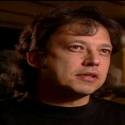February 12, 2006
New Guinea – More Species than Meet the Eye Part II
In my last post in regard to the discovery of abundance of new insect and plant species in Indonesian New Guinea, I made mention of a quizzical animal known as the Ri which ultimately turned out to be a misidentified dugong.
Yet another unknown Papuan creature, this time a reptile, was thought to be a undiscovered species of lake monster, but once again science came to the rescue and corrected a situation that sent waves through the cryptozoological realm.
Lake Dakataua on New Britain island was once thought to be the home of a lake monster which was even filmed by a Japanese film crew who had invited Dr. Roy Mackal to join them on a search for the beast. It turned out that there was a straightforward explanation to the creature that was seen in three segments. Two large crocodiles entered the lake to indulge in their mating ritual while the third one tagged along to as a spectator. No monster here, just amorous crocs.
If there is a mundane explanation to the mystery of the Ri and the Lake Dakataua monster, I wonder what awaits us when it comes to probing such vastly different mysteries such as the Ropen, its cousin the Duah and the unexplainable saurians of East New Britain and Lake Murray.
The Ropen has been around for a very long time as far as the outside world being aware of its existence is concerned. Two U.S. servicemen encountered this winged terror in the closing days of the Second World War near Finchhaven and told of their experiences when they returned to America. For a number of years, this animal that bears an uncanny resemblance to the pterosaur known as Rhamphorhynchus, was put on the back shelves of western consciousness until in 1994 an American scientific expedition which included Ropen researcher, Paul Nation, heard from natives that these animals were still active and to be feared. The American group revealed that they had received permission from the Papuan and U.S. governments to bring back six young or six eggs of the Ropen. Two eggs would remain in New Guinea and four would be transported to the U.S.
The description of the Ropen garnered from witnesses included features such as:
Wing spans of up to 25 feet (8-10 feet being more common).
A smooth black to brown hide.
No feathers.
Three fingers on each wing similar to those of a human.
Long hair like ‘grass’ only on the head.
A long snake-like tail
The creatures’ diet consists of clams and fish, but curiously this creature has a taste for rotting flesh and is know to disrupt funerals and dig up freshly buried corpses to satiate its appetite. Its cousin the Duah is even larger and is described by Papuans as having a bony crest on its head, a feature that any pterosaur enthusiast will tell you is a dead giveaway that we are talking about a Pteranodon-like animal here. The Duan displays a type of natural phosphorescence as it is frequently seen with its underbelly aglow at night. Bill Gibbons has spoken to an American minister of religion with an interest in cryptozoology, who witnessed the glowing phenomenon for himself as a Duah soared down from a mountain and flew over the observation boat in which the minister was keeping watch for the winged monstrosity.
In Part III of the New Guinea saga we shall see that living dinosaurs appear to be on the loose on two different islands.
 About John Kirk
About John Kirk
One of the founders of the BCSCC, John Kirk has enjoyed a varied and exciting career path. Both a print and broadcast journalist, John Kirk has in recent years been at the forefront of much of the BCSCC’s expeditions, investigations and publishing. John has been particularly interested in the phenomenon of unknown aquatic cryptids around the world and is the author of In the Domain of the Lake Monsters (Key Porter Books, 1998).
In addition to his interest in freshwater cryptids, John has been keenly interested in investigating the possible existence of sasquatch and other bipedal hominids of the world, and in particular, the Yeren of China. John is also chairman of the Crypto Safari organization, which specializes in sending teams of investigators to remote parts of the world to search for animals as yet unidentified by science. John travelled with a Crypto Safari team to Cameroon and northern Republic of Congo to interview witnesses among the Baka pygmies and Bantu bushmen who have sighted a large unknown animal that bears more than a superficial resemblance to a dinosaur.
Since 1996, John Kirk has been editor and publisher of the BCSCC Quarterly which is the flagship publication of the BCSCC. In demand at conferences, seminars, lectures and on television and radio programs, John has spoken all over North America and has appeared in programs on NBC, ABC, CBS, PBS, TLC, Discovery, CBC, CTV and the BBC.
In his personal life John spends much time studying the histories of Scottish Clans and is himself the president of the Clan Kirk Society. John is also an avid soccer enthusiast and player.
Email • Facebook • Twitter •
Filed under Cryptid Universe, Cryptozoology, Lake Monsters, Living Dinosaurs, Public Forum
